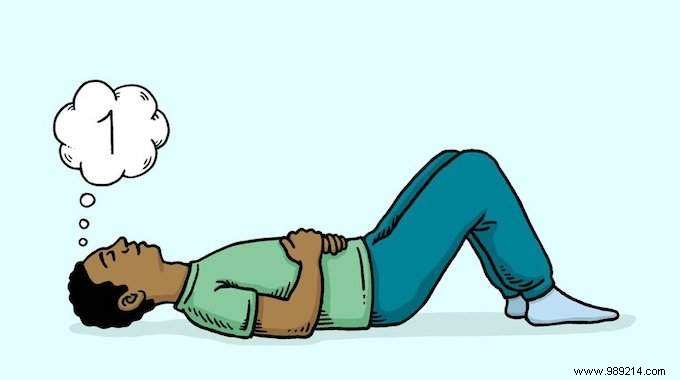
Inhale deeply, expanding your belly.
Pause while holding your breath.
Exhale slowly, counting to 5.
Repeat 4 times.
Congratulation. You have just calmed your nervous system.
Controlled breathing exercises, like the one you just did, are known to reduce stress, increase concentration, and boost the immune system.
For centuries, yogis have used breath control, or pranayama, to promote concentration and improve vitality.
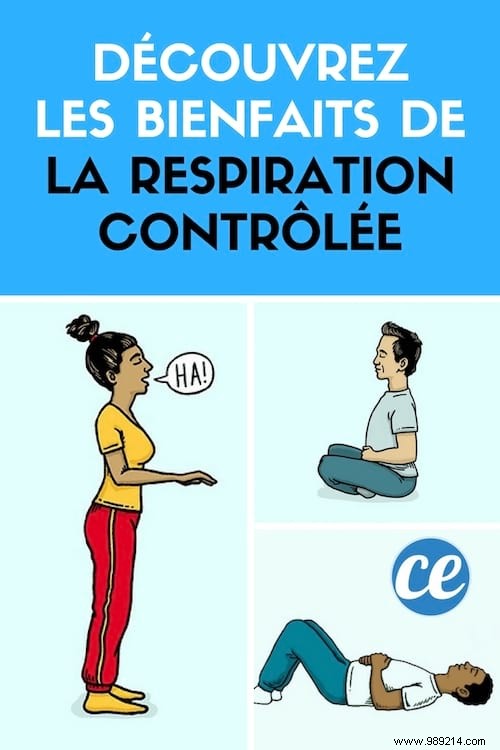
The Buddha himself extolled the benefits of breathing meditation as one way to achieve enlightenment.
And today, scientific research is also beginning to prove that the benefits of this practice are indeed real.
In fact, several studies have already shown that breathing exercises help reduce the symptoms of many diseases.
These exercises relieve anxiety, insomnia, post-traumatic stress disorder, depression and attention deficit disorder, among others.
“The benefits of controlled breathing are simply enormous,” says Belisa Vranich, psychologist and author of the book Breathe .
"Controlled breathing is like meditation for those who don't have time to meditate."
According to scientific studies, controlled breathing would modify the response of our autonomic nervous system.
It is this part of the nervous system that is responsible for unconscious functions of the organism.
These functions include heart rate, digestion, but also how our body reacts to stress , explains Dr. Richard Brown, co-author of a book on the benefits of controlled breathing, The Healing Power of the Breath .
By deliberately changing the way we breathe, it sends a signal to our brain which acts on the parasympathetic nervous system.
It is this part of the autonomic nervous system that slows heart rate and digestion, and promotes feelings of calm.
But that's not all, thanks to controlled breathing, the brain also slows down the activity of the sympathetic nervous system, which controls the secretion of hormones directly related to stress.
As you know, stress can aggravate or trigger many disorders, such as anxiety and depression.
"Many of my patients who have taken up controlled breathing have had their lives changed," says Dr. Brown, who teaches breathing workshops around the world.
When you take slow and steady breaths , your brain receives the message that everything is fine and it activates your body's parasympathetic response, explains Dr. Brown.
Conversely, when you take rapid, shallow breaths , or you hold your breath, then the sympathetic reaction is activated.
"If you breathe correctly, then your mind will naturally calm down," summarizes Dr. Patricia Gerbarg, co-author of Dr. Brown's book.
Dr. Chris Streeter is an associate professor of psychiatry and neurology at Boston University.
Recently, she conducted this study in which she measured the effect of daily yoga practice and controlled breathing on people with major depressive disorder.
After 12 weeks of yoga and controlled breathing, the subjects' depressive symptoms decreased considerably.
In addition, levels of gamma-aminobutyric acid, a neurotransmitter with calming and anxiolytic effects , increased in these individuals.
The results of Dr. Streeter's study were presented at the International Congress on Integrative Medicine in Las Vegas.
Here's how Dr. Steeter sums up her study:"The results are exciting, and very promising.
They prove that by modifying only the behavior of a person who suffers from depression, you can get better results than with antidepressants."
Controlled breathing can also improve the immune system.
In this study from the Medical University of South Carolina, researchers recruited 20 healthy adults and separated them into two groups.
They asked the first group to do 2 controlled breathing exercises, 10 minutes each.
Then, the researchers asked people in the second group to read a text of their choice for 20 minutes.
People in both groups were tested for saliva at various intervals during the study.
The researchers found that the saliva of those in the breathing exercise group had lower levels of cytokines that are associated with inflammation and stress.
Convinced of the benefits of controlled breathing? So here are 3 simple exercises you can try at home right now:
No time to learn several breathing techniques? Then this is the one you absolutely have to try.
The goal of controlled breathing is to breathe at the rate of 5 breaths per minute. This represents approximately 6 seconds for each inhale and exhale.
If you've never done breathing exercises, maybe 6 sec will seem a bit difficult at first.
If so, just take it slower. Start with inhales and exhales counting to 3 sec, and gradually increase to 6 sec. Watch:
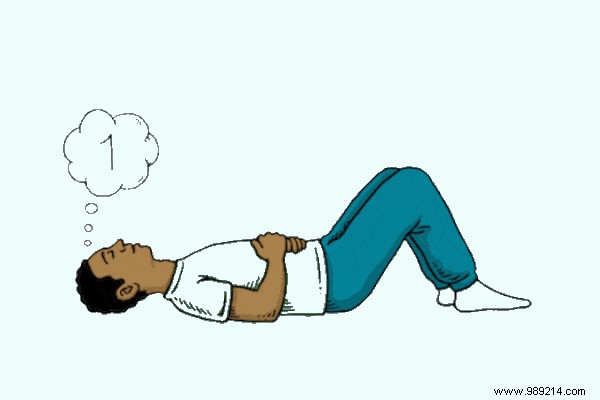
Artwork by Andrew Rae
1. While lying down, put your hands on your stomach.
2. Inhale slowly to expand the belly, counting to five in your head.
3. Pause for two seconds, holding your breath.
4. Exhale slowly, counting to 6.
5. Repeat this exercise gradually, for 10 to 20 minutes a day.
Note that you can also do this exercise in a seated position.
When your mind is racing and you've been particularly stressed, try this breathing exercise.
Not only does it relieve stress, but it also has the advantage of strengthening the abs. Watch:
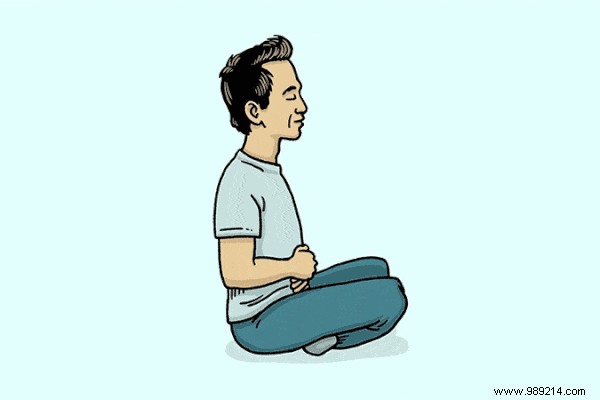
Artwork by Andrew Rae
1. Sit up straight on the floor.
2. Put your hands on your stomach.
3. Inhale, by leaning slightly forward and inflating your belly.
4. While drawing in your stomach and straightening up, exhale until you have completely emptied the air from your lungs.
5. Repeat the exercise 20 times.
Know that you can also do this breathing exercise sitting on the edge of a chair.
Do you feel a loss of energy in the middle of the afternoon?
So get up and do this quick and easy breathing exercise.
This energizing "HA" exercise is perfect for revitalizing and stimulating the body. Watch:
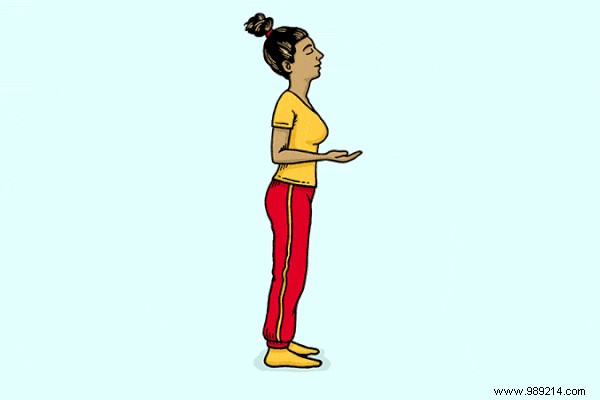
Artwork by Andrew Rae
1. While standing up straight, bend your elbows and turn your palms up.
2. Inhale and, at the same time, pull the elbows back, always with the palms up.
3. Exhale quickly, reach your hands forward, turn your palms down, and say "Ha!" out loud.
4. Repeat this exercise quickly, 10 to 15 times.